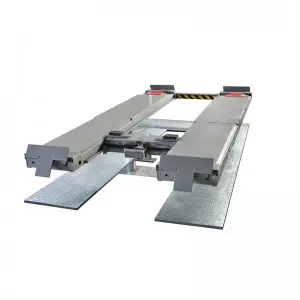The cylinder has been a fundamental shape in engineering and design for centuries, playing a crucial role in various applications ranging from engines to storage containers. Understanding its history, design, and applications can provide valuable insights into the power of this simple yet versatile shape.

The Power of the Cylinder: Understanding its History, Design, and Applications
Dating back to ancient civilizations, the cylinder has been used in various forms for different purposes. The earliest known use of cylindrical shapes can be traced back to Mesopotamia in the third millennium BC, where cylindrical seals were used for marking documents and clay tablets. The Egyptians also utilized cylindrical shapes in the construction of pyramids and obelisks, showcasing the stability and strength of this geometric form.
In the field of mathematics, the cylinder is defined as a three-dimensional shape with parallel circular bases connected by a curved surface. This simple definition belies the complex properties and applications of the cylinder in modern engineering and design. Cylinders are commonly used in the design of mechanical components such as pistons, hydraulic cylinders, and pressure vessels due to their ability to withstand high pressures and forces.
One of the key features of the cylinder is its volume, which is calculated by multiplying the area of the base by the height of the cylinder. This property makes cylinders ideal for storing liquids and gases, as they can hold a large volume of material in a relatively compact space. This is why cylinders are commonly used in gas cylinders for storing compressed gases such as oxygen, helium, and acetylene.
Cylinders are also commonly used in automotive engines, where they play a critical role in converting fuel into mechanical energy. The pistons inside a cylinder move up and down in a controlled manner, creating the necessary combustion and energy transfer to drive the vehicle. The design of the cylinder head, valves, and combustion chamber all play a crucial role in optimizing the efficiency and performance of the engine.
In the field of architecture and construction, cylinders are often used in the design of tall buildings and structures. The cylindrical shape provides stability and load-bearing capacity, making it an ideal choice for high-rise buildings and towers. The cylindrical design also allows for efficient use of space, as the circular footprint minimizes wasted space and maximizes usable area.

The Power of the Cylinder: Understanding its History, Design, and Applications

The Power of the Cylinder: Understanding its History, Design, and Applications
The versatility of the cylinder extends beyond engineering and design, with applications in art, music, and even culinary arts. In art, cylinders are commonly used in sculptural forms to create curves and contours in three-dimensional pieces. In music, cylindrical shapes are found in instruments such as flutes, trumpets, and clarinets, where the cylindrical bore of the instrument helps to produce specific tones and pitches. In culinary arts, cylindrical molds are used to shape and present food items such as cakes, pastries, and desserts in an aesthetically pleasing manner.
Overall, the cylinder is a simple yet powerful shape with a wide range of applications across various industries. From engineering and design to art and culinary arts, the cylinder continues to play a crucial role in shaping the world around us. Understanding the history, design, and applications of the cylinder can provide valuable insights into the power and versatility of this timeless geometric form.quicklift car lift
